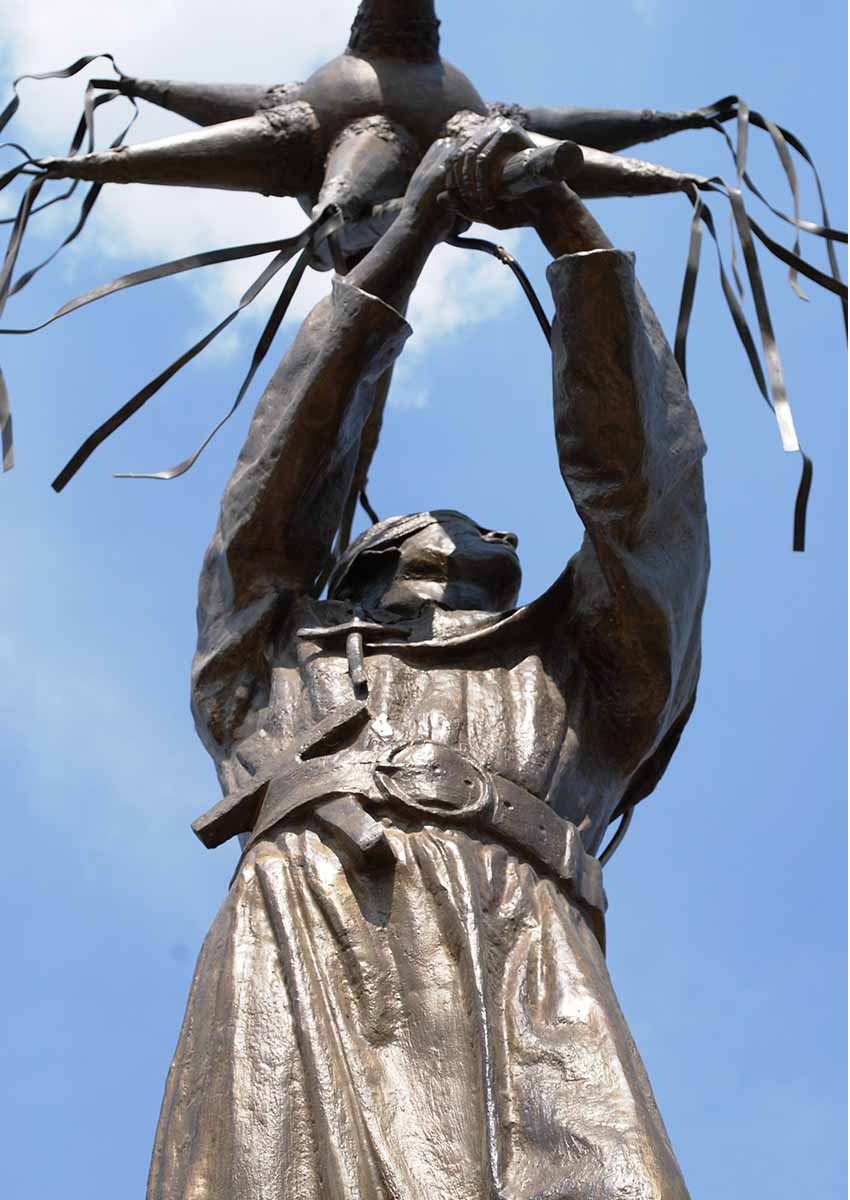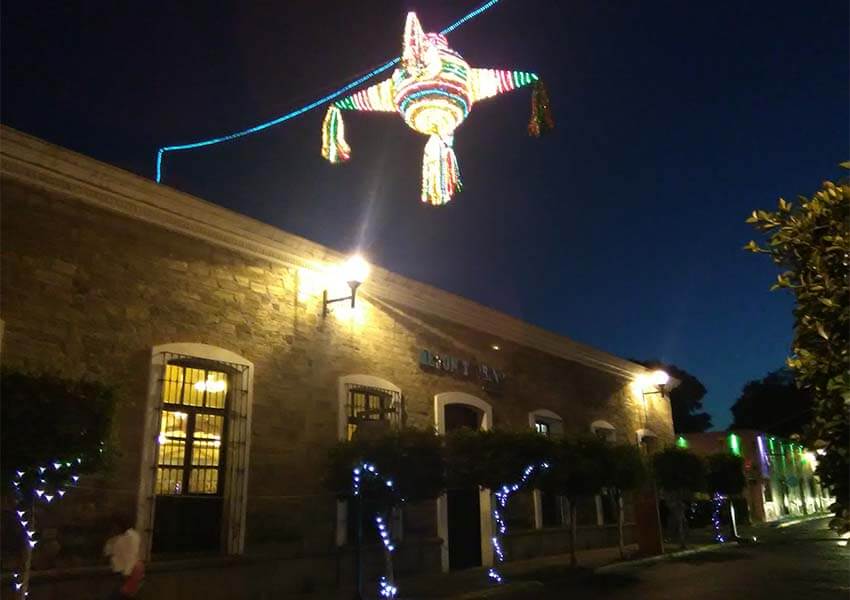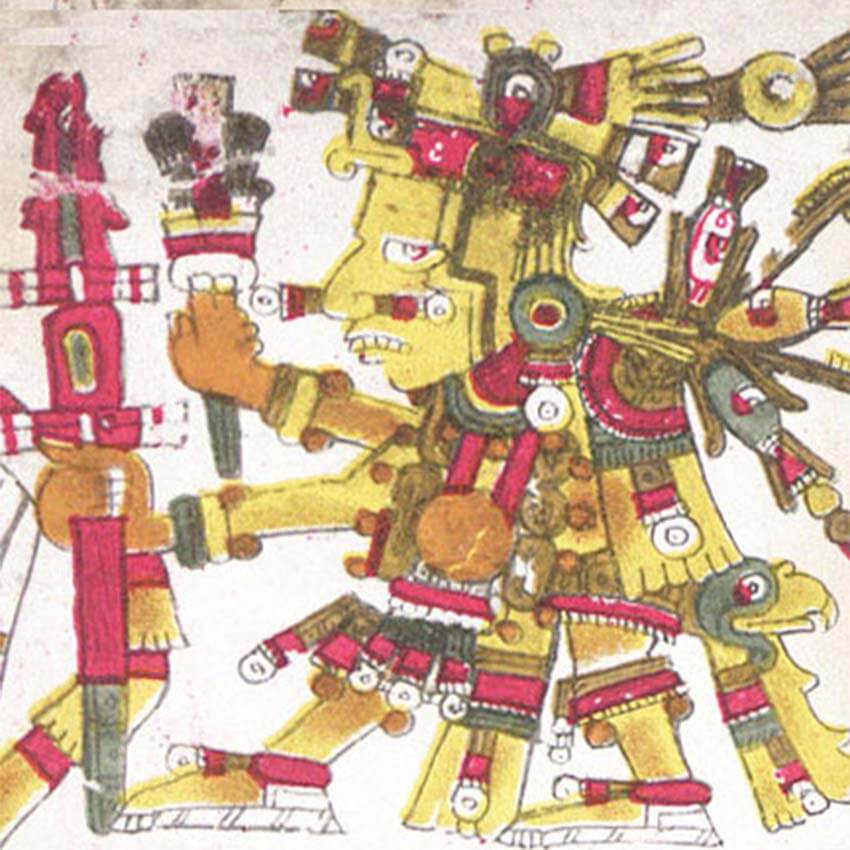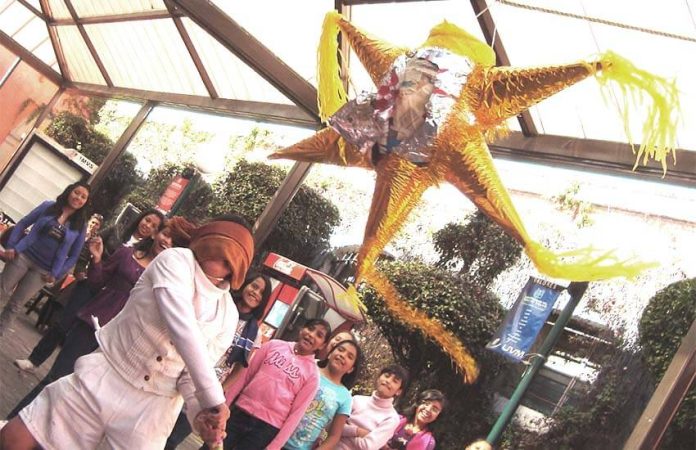Few things evoke Mexico in our minds as does the traditional star-shaped piñata.
Piñatas are extremely important to Mexican popular culture. They are ubiquitous at birthdays, for example, but the most traditional ones are associated with Christmas.
But did they originate in Mexico? The answer is mostly yes …. and a little no.
Modern Mexican piñatas are a combination of two cultural lineages: the breaking of a container with something special inside was part of various Mesoamerican cultures. The Mayan version even had a blindfolded participant hit the pot. But the direct ancestor of the modern piñata was the Aztec version.
It honored the birth of Huitzilopochtli, the god of the sun and of war and the principal deity on the winter solstice, considered to be his day of birth. This date was also the first day of the new year, as the sun returned from the longest night of the year.

For this version of the piñata, an old clay pot was decorated with feathers to represent the god. Feathers were important because Huitzilopochtli was said to have been conceived due to his mother absorbing a ball of feathers into her abdomen, and so he was born with feathers on his body. In the ritual, the pot was broken and the fruits of the season and other edibles were shared.
Way over on the other side of the world, the Chinese had developed a similar tradition to mark their new year, celebrated in the early spring. Their version made a vessel in the shape of a cow or ox decorated with symbols and colors meant to bring luck for the coming growing season.
It was filled with seeds and hit with a stick. After being broken, the remains were burned and the ashes kept for good luck.
By the time the Spanish had reached the Americas, Europeans had brought the Chinese tradition west and were breaking decorated clay pots filled with edibles. They had adapted it culturally by making it a tradition for the first Sunday of Lent. So, where does the name piñata come from?
It has its origins in the Italian pignatta, which means “clay cooking pot.” The Spanish version used a plain clay vessel and decorated it with ribbons, tinsel and colored paper.
One of the first undertakings after the conquest was to convert the indigenous Mexica (Aztecs) to Catholicism. As was the case in Europe centuries earlier, this was achieved with a combination of force, political maneuvering and, at times, co-opting native traditions and symbolism to the conquerors’ religion.

Because of the importance of Huitzilopochtli and his birthday, the last option was taken. Evangelists at the monastery in Acolman, México state — today considered the home of the piñata — are credited with mixing the two clay pot traditions and adding some new elements.
European piñata making and breaking was moved to the days before Christmas to coincide with the indigenous festival. But the innovation came with the “new” piñata’s design and symbolism.
Seven cones or points were added onto the pot, along with the colored paper. These represented the seven deadly sins of Catholicism, and the piñata itself represented evil.
The blindfolded person represented faith in God, and the hitting of the piñata with the stick the struggle of man against evil. Breaking the piñata and the release of the edibles inside represented the success and rewards of winning this battle.
In some early traditions, the blindfolded person was turned 33 times, once for each year that Jesus is said to have lived.
Piñatas were the main event in a series of pre-Christmas get-togethers called posadas (lodgings), which today are still done to reenact the biblical story of Mary and Joseph looking for a place to stay before Jesus was born. Originally, the purpose of the posada tradition was to overwrite the whole Huitzilopochtli festival.

Now, if you thought that breaking a piñata by some kid wielding a stick while blindfolded was dangerous enough, can you imagine what it was like to scramble among other greedy little ones among shards of pottery?
In very few places, Christmas piñatas are still made with clay pots. Piñatas are made all over Mexico, in almost any shape, but now mostly use papier-mâché for the hollow container. While paper piñatas are certainly safer, the change is more likely due to economics than concerns about injury.
It is unknown how, when or why the piñata broke its temporal confines of the December holidays to become part of one of the most often performed party rituals. I suspect that it has a lot to do with the strong appeal to the human psyche in scrambling against others for stuff.
The original star-shaped piñata, today with anywhere from five to nine points, is still found almost exclusively in December. These same ones can also have “feather-like” tissue paper streamers as decorations.
Perhaps Huitzlopochli hasn’t disappeared entirely.
Leigh Thelmadatter arrived in Mexico 18 years ago and fell in love with the land and the culture in particular its handcrafts and art. She is the author of Mexican Cartonería: Paper, Paste and Fiesta (Schiffer 2019). Her culture column appears regularly on Mexico News Daily.
